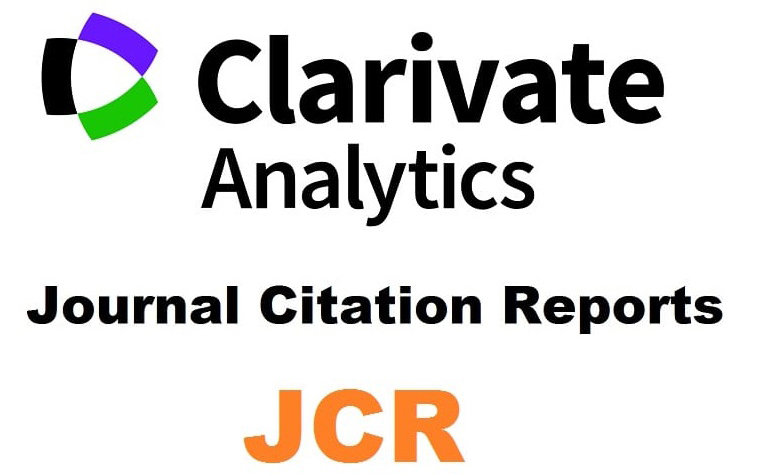Xenophon τακτικός? Remarks on his use of -ικός adjectives
¿Jenofonte τακτικός? Observaciones sobre su uso de los adjetivos en -ικός
DOI:
https://doi.org/10.12795/araucaria.2024.i57.13Palabras clave:
Tactics, -ikos adjectives, knowledge, leadership, evaluationResumen
Xenophon's interest in the art of command has never diminished. This article analyzes his ambivalent relationship with “tactics”, an art he sometimes dissociates himself from, because he considers it to take the place of a much more important knowledge that ultimately encompasses it. This is also demonstrated by his subtle use of -ikos adjectives in both the Memorabilia and the Hellenica. The list of terms, often attested for the first time, confirms that the suffix suggests a specialization and an approach to a limited body of knowledge, but above all demonstrates Xenophon's singular place in the transmission of military knowledge: he is both close to Aeneas the Tactician, as well as anxious to distinguish himself from these professionals of the military art.
Descargas
Citas
Ammann, A.D. 1953: -ικός bei Plato: Ableitung und Bedeutung mit Materialsammlung, Freiburg, Paulusdruckerei.
Anderson, J.K. 1970: Military theory and practice in the Age of Xenophon, Berkeley-Los Angeles, University of California Press.
Blaineau, A. 2014: “Comment dire la technique? Procédés d'écriture et variations énonciatives dans l'Hipparque et l'Art Equestre de Xénophon”, in P. Pontier (ed.), Xenophon et la rhétorique, Paris, Presses Universitaires de Paris-Sorbonne, 235-252.
Buxton, R. (ed.) 2016: Aspects of leadership in Xenophon, Histos Suppl. 5.
Casevitz, M. 2008: Xénophon. Constitution des Lacédémoniens, Hiéron, Agésilas, suivi de Pseudo-Xénophon. Constitution des Athéniens, Paris, Les Belles Lettres.
—2014: “La langue des opuscules: Hiéron, Agésilas, Constitution des Lacédémoniens”, in P. Pontier (ed.), Xenophon et la rhétorique, Paris, Presses Universitaires de Paris-Sorbonne, 269-278.
Chantraine, P. 1956: Études sur le vocabulaire grec, Paris, Klincksieck.
Delatte, A. 1933: Le troisième livre des souvenirs socratiques de Xénophon, Liège-Paris, Droz.
Demont, P. 1993: “Die Epideixis über die Techne im V. und IV. Jh.”, in W. Kullman, J. Althof (ed.), Vermittlung und Tradierung in der Griechischen Kultur, Tübingen, Gunter Narr Verlag, 181-210.
Dillery, J. 2016: “Response and further thoughts”, in R. Buxton (ed.), Aspects of leadership in Xenophon, Histos suppl. 5, 243-277.
Dorion, L.-A. 2013: “Socrate et la basilikê technê”, in Id., L’Autre Socrate, Paris, Les Belles Lettres, 147-170.
Dorion, L.-A., Bandini, M. (ed.) 2000: Xénophon. Mémorables. Livre I, Paris, Les Belles Lettres.
Flower, M. 2012: Xenophon’s Anabasis or the expedition of Cyrus, Oxford-New York, Oxford University Press.
Gautier, L. 1912: La Langue de Xénophon, Genève, Georg.
Gray, V. 2007: Xenophon on Government, Cambridge-New York, Cambridge University Press.
—2012: Xenophon’s mirror of princes. Reading the reflections, Oxford-New York, Oxford University Press.
—2017: “Xenophon's language and expression”, in M. Flower (ed.), The Cambridge Companion to Xenophon, New York-Cambridge, Cambridge University Press, 223-240.
Gronigen, B.A. van 1938: “Le vocabulaire d’Énée le Tacticien”, Mnemosyne, 6, 329-334.
Humble, N. 2021: Xenophon on Athens. A Socratic on Sparta, Oxford-New York, Oxford University Press.
Lane Fox, R. 2018: “Aineias the Author: Who, Where and When”, in M. Pretzler, N. Barley (ed.), Brill's Companion to Aineias Tacticus, Leiden-Boston, Brill, 33-48.
Lipka, M. 2002: Xenophon’s Spartan Constitution, Berlin-New York, De Gruyter.
Luccioni, J. 1954: Les Idées politiques et sociales de Xénophon, Paris, Ophrys.
Meißner, B. 2017: “Early Greek strategic and tactical teaching and Literature”, in P. Rance, N. Sekunda (ed.), Greek Taktika: Ancient Military writing and its heritage, Gdánsk, Akanthina, 65-80.
Noël, M.-P. 1997: “Mots nouveaux et idées nouvelles dans les Nuées d’Aristophane”, Ktèma, 22, 173-194.
Ollier, F. 1934: La République des Lacédémoniens, Lyon, Bosc Frères.
Peppler, Ch.W. 1910: “The termination -κός as used by Aristophanes for comic effect”, AJPh, 31, 428-444.
Pontier, P. 2006: Trouble et ordre chez Platon et Xénophon, Paris, Vrin.
Richter, E. 1893: “Xenophon-Studien”, Jahrbuch für klassische Philologie, Suppl. 19, 57-155.
Riedinger, J.-C. 1991: Étude sur les Helléniques. Xénophon et l’histoire, Paris, Les Belles Lettres.
Sandridge, N. 2012: Loving Humanity, learning, and being honored. The foundations of Leadership in Xenophon’s Education of Cyrus, Cambridge (Mass.)-London, Harvard University Press.
Shipley, G.J. 2018: “Aineias Tacticus in his intellectual context”, in M. Pretzler, N. Barley (ed.), Brill's Companion to Aineias Tacticus, Leiden-Boston, Brill, 49-67.
Thesleff, H. 1966: “Scientific and Technical Style in Early Greek Prose”, Arctos, 4, 89-113.
Tuci, P. 2022: “Tibrone, un armosta poco intra-prendente? Note su un Spartano in Asia”, Erga-Logoi, 10, 53-92.
Vela Tejada, J. 1991: Estudio sobre la lengua de la Poliorcética de Eneas el Táctico, Zaragoza, Prensas Universitarias de Zaragoza.
—2004: “Warfare, History and Literature in the Archaic and Classical Periods: The Development of Greek Military Treatises”, Historia, 53, 129-146.
—2018: “Creating Koine: Aineias Tacticus in the History of the Greek Language”, in M. Pretzler, N. Barley (ed.), Brill's Companion to Aineias Tacticus, Leiden-Boston, Brill, 96-122.
Whately, C. 2021: “Military manuals from Aeneas to Maurice”, in J. Chlup, C. Whately (ed.), Greek and Roman military manuals, London-New York, Routledge, 17-38.
Whitehead, D. 2002²: Aeneias the Tactician. How to survive under siege, Oxford, Clarendon Press.
Descargas
Publicado
Cómo citar
Número
Sección
Licencia
Las ediciones impresa y electrónica de esta Revista son editadas por el Secretariado de Publicaciones de la Universidad de Sevilla, siendo necesario citar la procedencia en cualquier reproducción parcial o total.Salvo indicación contraria, todos los contenidos de la edición electrónica se distribuyen bajo una licencia de uso y distribución “Creative Commons Atribución-NoComercial-SinDerivar 4.0 Internacional”








